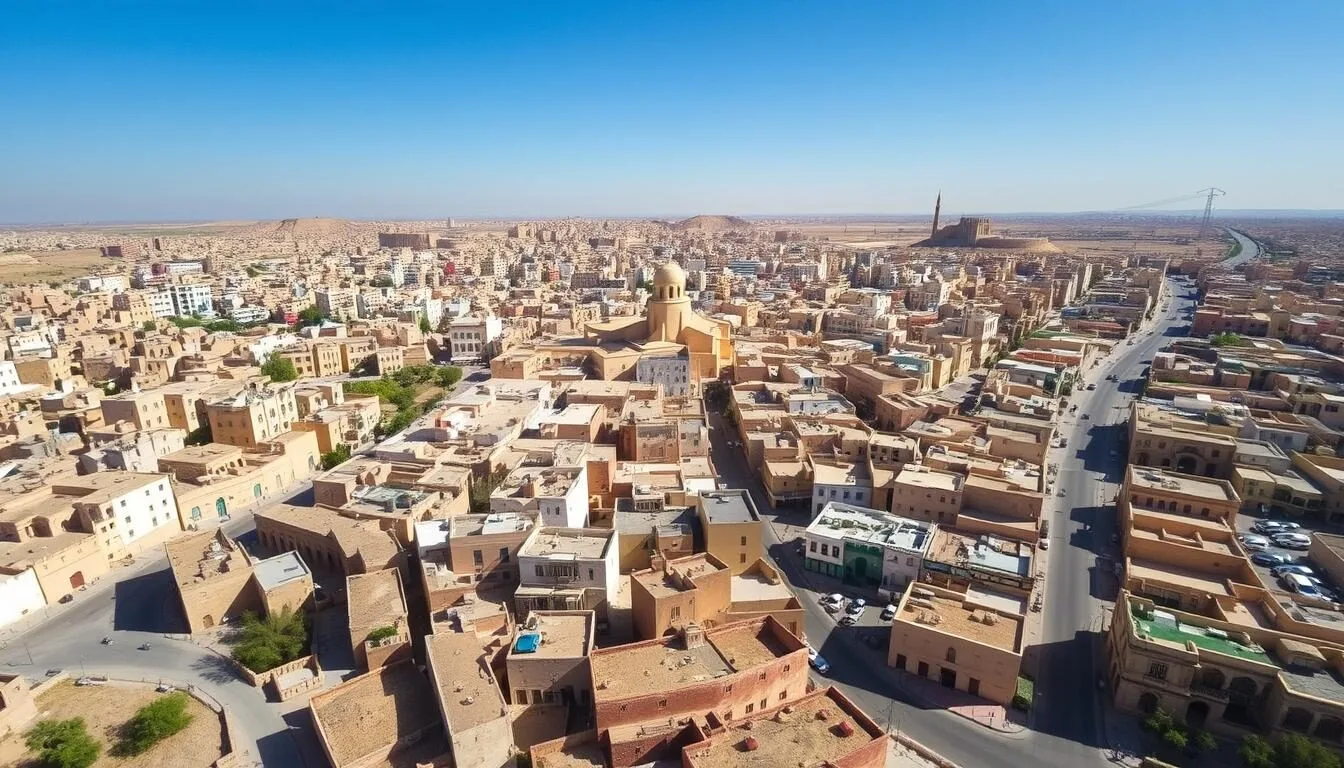Did you know that Madaba houses the oldest surviving cartographic depiction of Jerusalem and the Holy Land? This remarkable 6th-century mosaic map, composed of over 2 million colored stone pieces, has earned Madaba its nickname as the “City of Mosaics.” Beyond this famous treasure, this charming Jordanian city offers visitors a perfect blend of ancient history, biblical significance, and authentic cultural experiences, all within easy reach of Jordan’s most spectacular natural wonders.
Getting to Madaba & Planning Your Journey
Madaba is conveniently located just 30 km southwest of Amman and only 20 km from Queen Alia International Airport, making it an excellent starting point for your Jordan adventure. Many travelers find Madaba to be a more relaxed alternative to beginning their journey in bustling Amman.
How to Reach Madaba
- From Amman: The drive takes approximately 30-40 minutes depending on traffic. Public buses run regularly from Amman’s South Bus Station.
- From Queen Alia International Airport: Just a 20-minute drive, making Madaba an ideal first stop after landing in Jordan.
- From the Dead Sea: Approximately 40 km away, or a 40-50 minute drive.
Ready to Start Your Madaba Adventure?
Find the best flight deals to Jordan and begin your exploration of Madaba’s ancient wonders.
Best Time to Visit Madaba
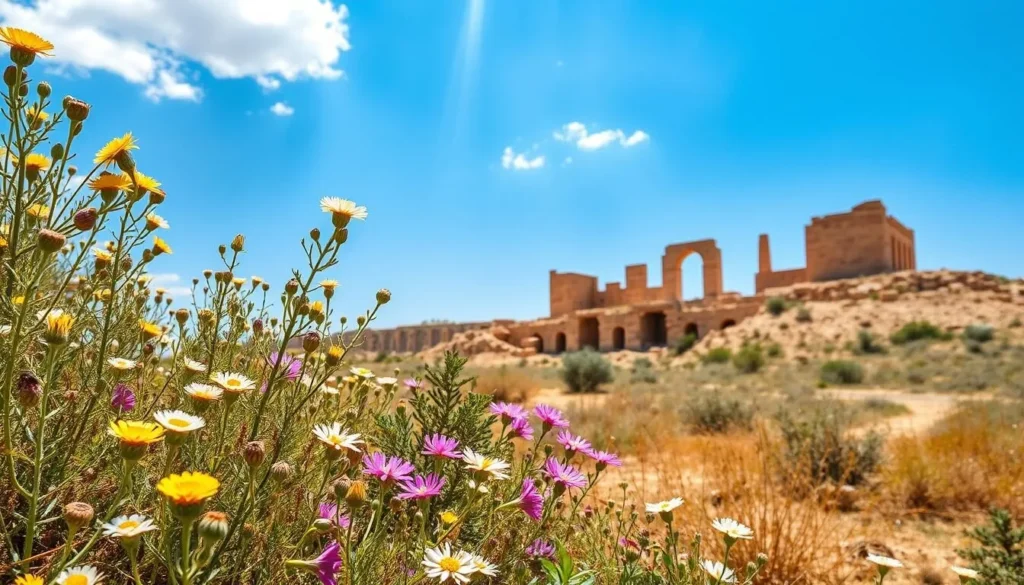
Madaba enjoys a moderate climate throughout most of the year, but certain seasons offer more comfortable conditions for exploration.
Recommended Seasons
- Spring (March to May): Temperatures range from 15°C to 25°C (59°F to 77°F). The landscape blooms with wildflowers, creating beautiful scenery for outdoor activities.
- Fall (September to November): Similar comfortable temperatures to spring, ranging from 18°C to 28°C (64°F to 82°F), with clear skies perfect for photography.
Months to Avoid
- Summer (June to August): Temperatures can soar above 35°C (95°F), making outdoor exploration uncomfortable, especially at midday.
- Winter (December to February): While not extremely cold (8°C to 14°C/46°F to 57°F), occasional rain and cloudy days can limit visibility of Madaba’s beautiful landscapes.
Travel Tip: If you’re planning to visit nearby Wadi Mujib, note that it’s typically closed after October due to high water levels, so plan your trip accordingly.
Getting Around Madaba
Madaba’s compact historical center makes it ideal for exploration on foot. Most major attractions, including St. George’s Church and the Archaeological Park, are within walking distance of each other.
Transportation Options
- Walking: The most pleasant way to experience Madaba’s charm, with most attractions accessible within a 15-20 minute walk.
- Taxis: Readily available and affordable for longer distances or day trips. Always negotiate the fare before departing.
- Rental Cars: Useful if you plan to explore beyond Madaba to sites like Mount Nebo, the Dead Sea, or further afield.
Explore Madaba at Your Own Pace
Rent a car to discover Madaba and its surrounding attractions with complete freedom.
Where to Stay in Madaba
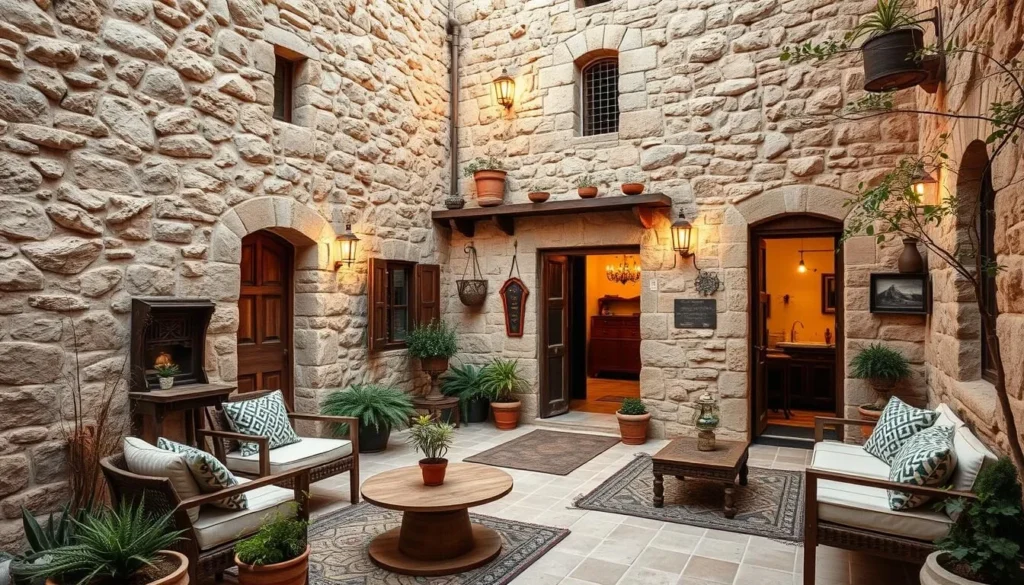
Madaba offers a range of accommodation options from budget-friendly guesthouses to more upscale hotels. Many are family-run establishments that provide authentic Jordanian hospitality.
Accommodation Options
Budget & Mid-Range
- Guesthouses: Family-run accommodations offering authentic experiences, often with home-cooked meals.
- Boutique Hotels: Charming properties in renovated traditional buildings, many within walking distance of main attractions.
Upscale
- Luxury Hotels: Several 4-star options with modern amenities, pools, and restaurants.
- Resort Properties: Located on the outskirts with more space and facilities.
Local Tip: Consider staying in accommodations near the city center for easy access to restaurants, shops, and major attractions. The area around St. George’s Church is particularly convenient.
Find Your Perfect Stay in Madaba
Browse a wide selection of accommodations from traditional guesthouses to modern hotels.
Dining & Local Cuisine in Madaba
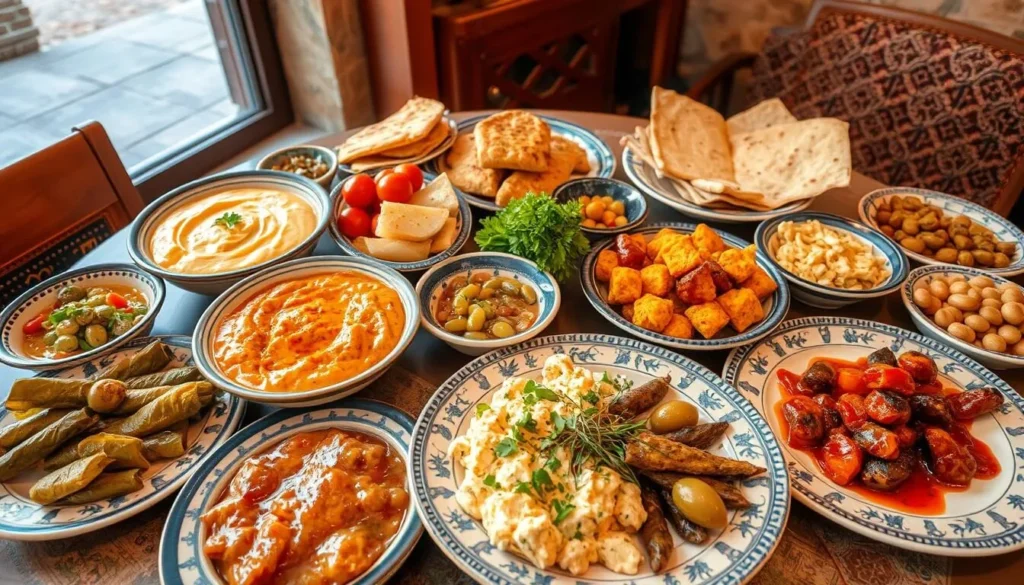
Madaba offers excellent opportunities to sample authentic Jordanian cuisine, from street food to sit-down restaurants serving traditional dishes.
Must-Try Local Dishes
- Mansaf: Jordan’s national dish consisting of lamb cooked in fermented dried yogurt, served over rice and topped with nuts.
- Fukharet: A clay pot dish with vegetables and cheese, baked in the oven and topped with bread.
- Mezze: Small dishes like hummus, mutabal (eggplant dip), and tabbouleh served as starters or a complete meal.
- Knafeh: A sweet cheese pastry soaked in sugar syrup, a perfect dessert after a hearty meal.
Recommended Restaurants
- Haret Jdoudna: Set in a beautiful traditional building with a lovely courtyard, serving excellent Jordanian cuisine.
- Ayola: Known for their delicious Fukharet and other traditional dishes at reasonable prices.
- Jaw Zaman: Features a nice balcony and serves quality local food.
- Kawon Bookstore: A unique spot combining a bookstore with a café, perfect for coffee and cake in a garden setting.
Top Attractions & Sightseeing in Madaba
St. George’s Greek Orthodox Church
Home to Madaba’s most famous attraction, the 6th-century mosaic map of Jerusalem and the Holy Land. This remarkable Byzantine mosaic once measured 15-25 meters long by 6 meters wide and contained approximately 2 million colored stone pieces. Though only partially preserved, it remains the oldest known geographic floor mosaic in art history.
Madaba Archaeological Park
This open-air museum houses some of the city’s most beautiful mosaics, including the stunning Hippolytus Hall with scenes from Greek mythology. The park also contains remnants of Roman roads and Byzantine-era homes, offering insight into daily life in ancient Madaba.

Church of the Apostles
Located near the edge of the city center, this site features a large 6th-century mosaic floor depicting the sea, various birds, fish, and a female personification of the sea labeled “Thalassa.” Less visited than other sites, it offers a quieter experience to appreciate the artistry.
Church of St. John the Baptist
This church offers more than meets the eye. Visitors can climb the bell tower for panoramic views of Madaba and explore the underground chambers believed to be where John the Baptist was beheaded. The subterranean area features several rooms and corridors that create an archaeological adventure.
Experience Madaba’s Ancient Wonders
Discover the rich history and remarkable mosaics of Madaba with expert guides who bring the past to life.
Day Trips from Madaba
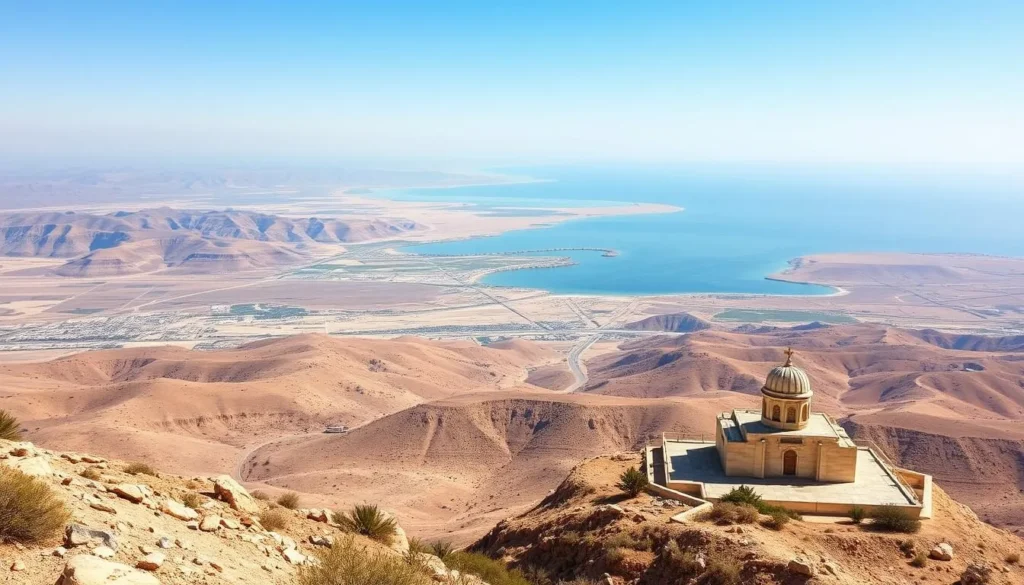
Madaba’s central location makes it an ideal base for exploring some of Jordan’s most spectacular attractions, all within easy reach.
Mount Nebo (9 km)
Just a 15-minute drive from Madaba, Mount Nebo is believed to be where Moses viewed the Promised Land before his death. The site features a modern memorial church housing beautiful preserved mosaics and offers breathtaking panoramic views of the Jordan Valley, Dead Sea, and on clear days, even Jerusalem.
The Dead Sea (29 km)
The lowest point on Earth at 430 m (1,410 ft) below sea level, the Dead Sea offers the unique experience of effortlessly floating in its mineral-rich, hypersaline waters. Several beach resorts provide day access with facilities for changing, showering, and applying the famous Dead Sea mud known for its therapeutic properties.

Baptism Site (Al-Maghtas) (40 km)
This UNESCO World Heritage Site is believed to be where Jesus was baptized by John the Baptist. Visitors join guided tours to see the original baptism site, ancient churches, and the Jordan River where pilgrims still come to be baptized.
Wadi Mujib (60 km)
Known as the “Grand Canyon of Jordan,” this spectacular gorge features hiking trails through dramatic scenery and water trails where you can wade through crystal-clear streams. Note that water trails are typically closed after October due to high water levels.
Explore Beyond Madaba
Make the most of your Jordan adventure with guided day trips to these remarkable nearby attractions.
Shopping & Souvenirs
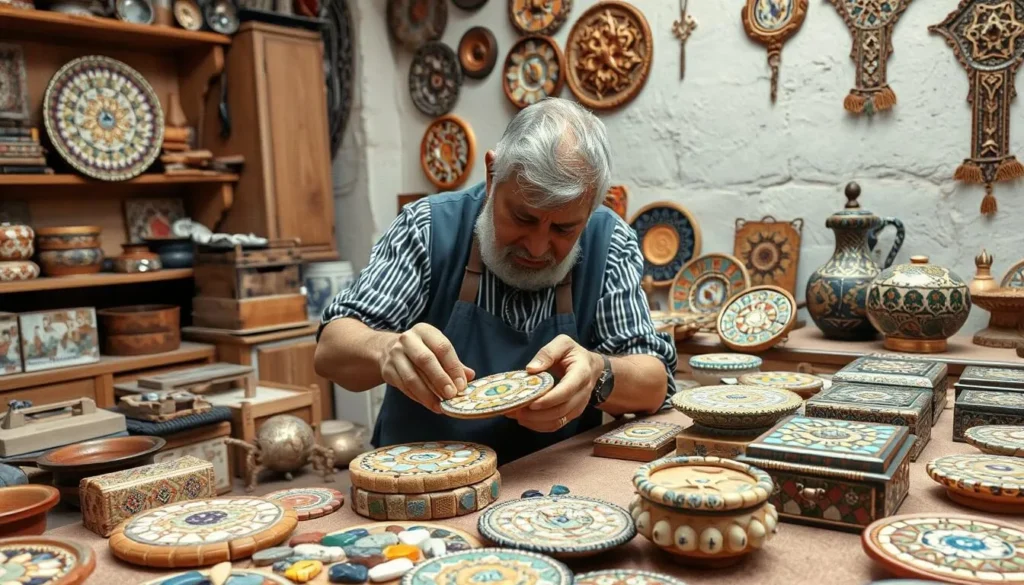
Madaba is renowned for its mosaic workshops and offers excellent shopping opportunities for unique, handcrafted souvenirs that reflect the city’s artistic heritage.
What to Buy
- Miniature Mosaics: Beautiful handcrafted pieces in various sizes, from small coasters to elaborate wall hangings.
- Traditional Textiles: Embroidered scarves, handmade fabrics, and clothing reflecting Jordanian and Bedouin heritage.
- Handmade Jewelry: Unique pieces featuring traditional designs and natural stones.
- Leather Goods: Quality handcrafted belts, wallets, and bags made by local artisans.
Where to Shop
- King’s Highway: Lined with small shops selling a variety of local crafts and souvenirs.
- Haret Jdoudna: Features several shops around its courtyard selling quality handicrafts and clothing.
- Mosaic Workshops: Many workshops welcome visitors to observe the creation process and purchase directly from artisans.
Shopping Tip: While bargaining is common in markets, prices in established shops are usually fixed. Quality mosaic work is labor-intensive, so expect to pay more for finely detailed pieces.
Practical Travel Tips

Jordan Pass
Consider purchasing the Jordan Pass before your trip, which includes your tourist visa fee and entrance to many attractions throughout Jordan, including Petra. This can save you significant money if you plan to visit multiple sites.
Dress Code
As a conservative city with many religious sites, modest dress is recommended. Both men and women should cover shoulders and knees, especially when visiting churches and mosques. Women may want to carry a light scarf for covering their heads when entering religious buildings.
Language
Arabic is the official language, but English is widely spoken in tourist areas, hotels, and restaurants. Learning a few basic Arabic phrases is appreciated by locals and can enhance your experience.
Currency & Payments
The Jordanian Dinar (JOD) is the local currency. While credit cards are accepted in hotels and larger restaurants, smaller establishments and markets often prefer cash. ATMs are available in the city center.
Safety
Madaba is generally very safe for tourists. Take normal precautions with valuables and be aware of your surroundings, especially in crowded areas. The biggest risks are typically related to sun exposure and dehydration, so carry water and use sun protection.
Suggested Itineraries
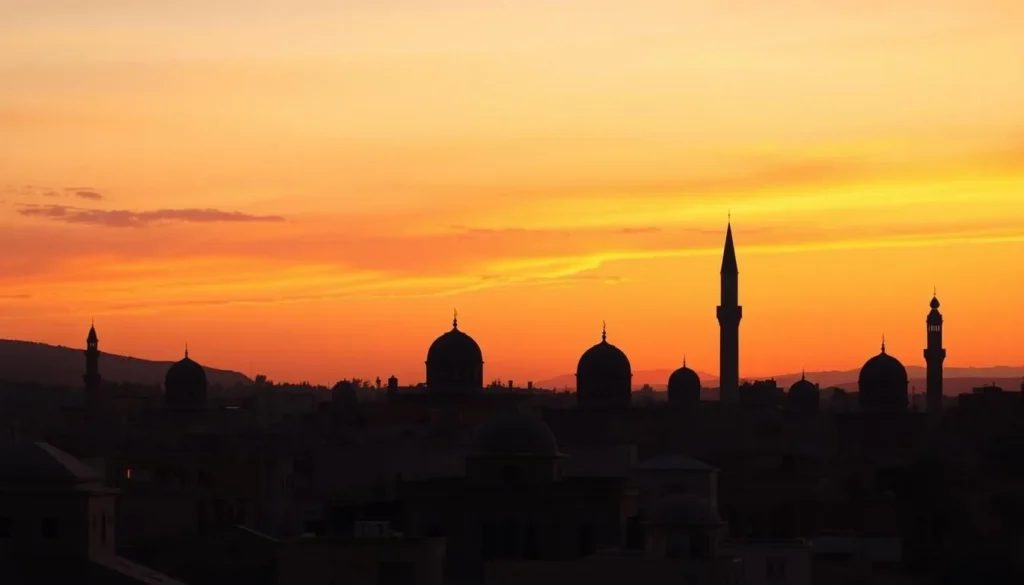
One Day in Madaba
- Morning: Visit St. George’s Church to see the famous mosaic map, then explore the Archaeological Park.
- Lunch: Enjoy traditional Jordanian cuisine at Haret Jdoudna.
- Afternoon: Visit the Church of St. John the Baptist, climb the bell tower, and explore the underground chambers.
- Evening: Stroll along the King’s Highway for shopping, then dinner at a local restaurant.
Two Days in Madaba
- Day 1: Follow the one-day itinerary above.
- Day 2: Take a day trip to Mount Nebo and the Dead Sea, returning to Madaba in the evening.
Three Days in Madaba
- Day 1: Explore Madaba’s main attractions.
- Day 2: Visit Mount Nebo and the Baptism Site.
- Day 3: Spend a full day at the Dead Sea or take an adventure to Wadi Mujib (seasonal).
Create Your Perfect Madaba Experience
Customize your itinerary with expert-guided tours that showcase the best of Madaba and its surroundings.
Experience the Magic of Madaba
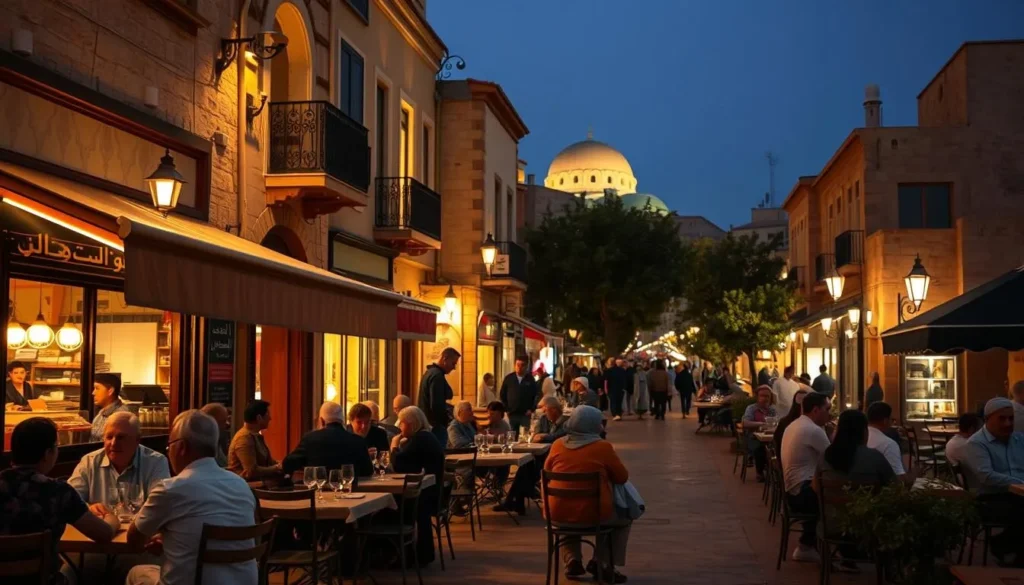
Madaba offers a perfect blend of historical significance, cultural richness, and natural beauty that makes it an essential stop on any Jordan itinerary. Whether you’re marveling at ancient mosaics, floating in the Dead Sea, or savoring authentic Jordanian cuisine, Madaba provides experiences that will create lasting memories.
This charming city serves as both a destination in its own right and an ideal base for exploring Jordan’s remarkable attractions. With its walkable center, friendly locals, and relaxed atmosphere, Madaba offers a more authentic and less hectic alternative to starting your Jordan adventure in Amman.
Ready to uncover the ancient wonders and modern charms of Madaba? Start planning your journey today and discover why this “City of Mosaics” continues to captivate travelers from around the world.
Begin Your Madaba Adventure
From flights and accommodations to tours and activities, everything you need for an unforgettable Madaba experience is just a click away.
The above is subject to change.
Check back often to TRAVEL.COM for the latest travel tips and deals.
